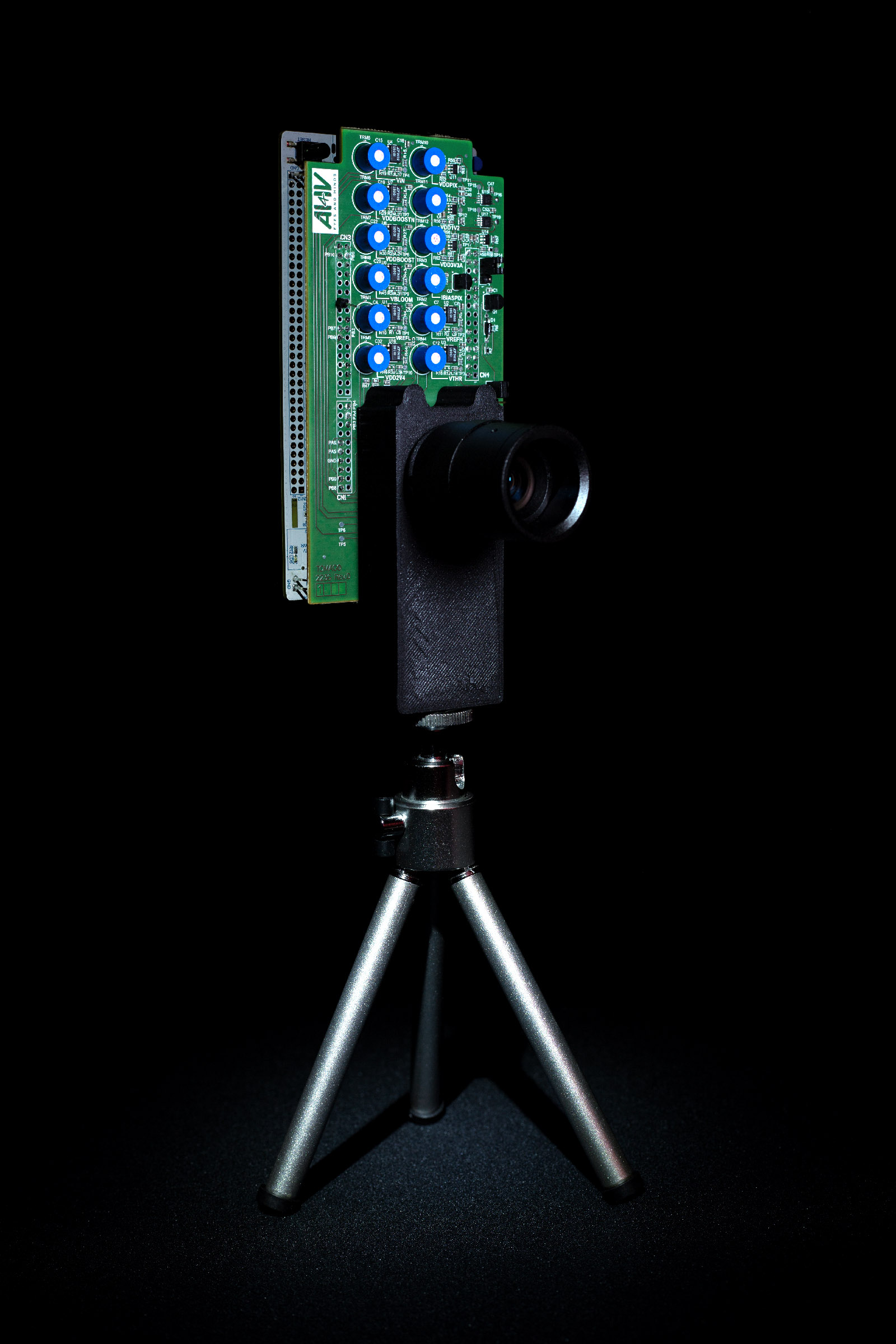From darkest shadow to brightest highlights
From darkest shadow to brightest highlights
FlyEye® Vision Sensor Prototype
From darkest shadow to brightest highlights
FlyEye® Vision Sensor Prototype
An important milestone in AI4IV’s journey was the creation of the FlyEye® Vision Sensor Prototype, developed to validate the core innovation behind our technology: self-adapting photoreceptors.
The prototype was fabricated as a 1 mm² silicon die using LFoundry 110 nm CIS technology. It implements a 50×50 array of FlyEye® photoreceptors, each built from basic 8 μm-pitch photodiodes combined with simple analog memories.
An important milestone in AI4IV’s journey was the creation of the FlyEye® Vision Sensor Prototype, developed to validate the core innovation behind our technology: self-adapting photoreceptors.
The prototype was fabricated as a 1 mm² silicon die using LFoundry 110 nm CIS technology. It implements a 50×50 array of FlyEye® photoreceptors, each built from basic 8 μm-pitch photodiodes combined with simple analog memories.
An important milestone in AI4IV’s journey was the creation of the FlyEye® Vision Sensor Prototype, developed to validate the core innovation behind our technology: self-adapting photoreceptors.
The prototype was fabricated as a 1 mm² silicon die using LFoundry 110 nm CIS technology. It implements a 50×50 array of FlyEye® photoreceptors, each built from basic 8 μm-pitch photodiodes combined with simple analog memories.
Although this first device was low resolution and not designed for real-world applications, it achieved its purpose: it demonstrated that FlyEye® photoreceptors could automatically adapt to an exceptionally broad range of light intensities in the same scene, producing high-quality, artefact-free images regardless of lighting conditions.
This proof of concept was a crucial validation step in the FlyEye® roadmap, confirming that our bio-inspired approach works in silicon and paving the way for scaling to much higher resolutions suitable for practical use.
With this validation in place, AI4IV has a solid foundation for developing the next generation of vision sensors, devices capable of delivering the adaptability of the prototype together with the performance required for advanced intelligent vision applications.
Although this first device was low resolution and not designed for real-world applications, it achieved its purpose: it demonstrated that FlyEye® photoreceptors could automatically adapt to an exceptionally broad range of light intensities in the same scene, producing high-quality, artefact-free images regardless of lighting conditions.
This proof of concept was a crucial validation step in the FlyEye® roadmap, confirming that our bio-inspired approach works in silicon and paving the way for scaling to much higher resolutions suitable for practical use.
With this validation in place, AI4IV has a solid foundation for developing the next generation of vision sensors, devices capable of delivering the adaptability of the prototype together with the performance required for advanced intelligent vision applications.
Although this first device was low resolution and not designed for real-world applications, it achieved its purpose: it demonstrated that FlyEye® photoreceptors could automatically adapt to an exceptionally broad range of light intensities in the same scene, producing high-quality, artefact-free images regardless of lighting conditions.
This proof of concept was a crucial validation step in the FlyEye® roadmap, confirming that our bio-inspired approach works in silicon and paving the way for scaling to much higher resolutions suitable for practical use.
With this validation in place, AI4IV has a solid foundation for developing the next generation of vision sensors, devices capable of delivering the adaptability of the prototype together with the performance required for advanced intelligent vision applications.

